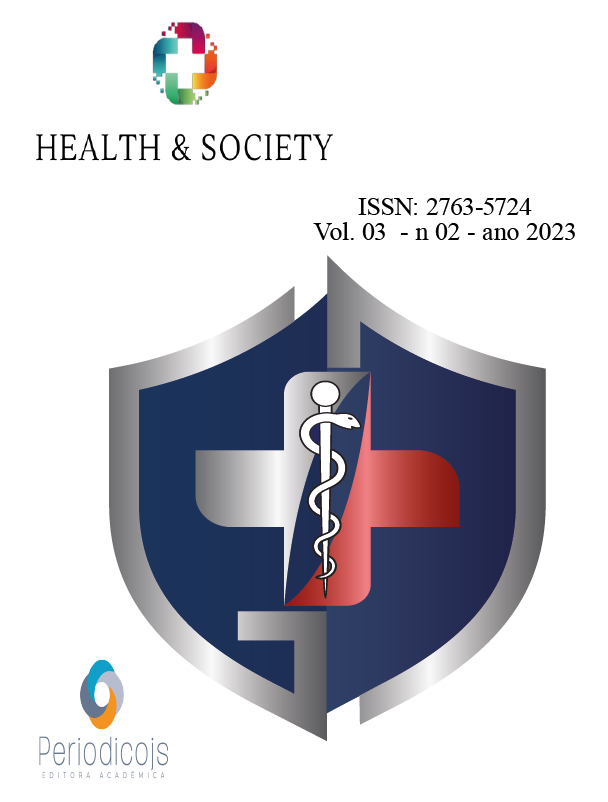Abstract
Urinary Incontinence (UI) is the involuntary loss of urine and affects 27% of the world’s population. It is twice as common in women, and in post-menopausal women it reaches up to 70%. The objective of this paper is to expose proof methods of Functional the Pelvic Floor Muscles Training (PFMT) and its interaction, or not, with Acupuncture, in order to verify the effectiveness of Acupuncture in the Treatment of Urinary Incontinence (UI). Among the analysis carried out through virtual surveys and supporting literature, are the definition of UI, description of TMAP and Acupuncture. Traditional treatment methodologies were exposed for each case, as well as physiotherapy and use of needles for the treatment of UI. Throughout the study, the techniques considered by specialists as an adjuvant option to drug treatment were exposed. During the paper conception, this possibility was sometimes combined with the use of Acupuncture. The condition of each group was considered so that a series of results index could be measured. It was noticed that the conduct performed for the treatment of UI along with Acupuncture resources has little to no difference when compared to other therapeutic interventions. Despite being an old problem, UI is neglected and gets concealed due to its convergence with socioeconomic and cultural factors, further corroborating to the non-treatment or application of inappropriate interventions. Acupuncture goes against multimodal therapies and is not effective when conducted in isolation. Therefore, further studies in the area are suggested for a better understanding of the subject.
References
ALCÂNTARA, Grasielle Kelly Silva de; GUEDES, Quitéria A. C. Recursos fisioterapêuticos no tratamento da incontinência urinária de esforço em mulheres: uma revisão de literatura. Artigo (Bacharel em Fisioterapia) – Centro Universitário Tiradentes, (UNIT) – Cruz das Almas, Maceió - AL, 2021.
ANDRADE, Débora Coelho. Importância do fortalecimento do assoalho pélvico em gestantes 2021, f.63. Monografia (Bacharel em Fisioterapia) – Centro Universitário AGES, (UniAGES) – Paripiranga - Bahia, 2021.
ANDRADE, J. A.; BUGNI, V. M.; MACIEL JÚNIOR, J. A. Acupuntura: prática e riscos. Ciência Hoje, São Paulo, v. 36, n. 215, p. 72-75, 2005.
AZEVEDO, C. Efetividade da acupuntura auricular associada ao treinamento muscular pélvico para controle da incontinência urinária pós-prostatectomia radical: ensaio clínico randomizado. Tese (Doutorado em Enfermagem) – Universidade Federal de Minas Gerais, Belo Horizonte, 2021.
BARACHO, E. Fisioterapia Aplicada à Saúde da Mulher. 6. Ed Rio de Janeiro, Guanabara Koogan, 2018.
BARBOSA, T. B. C. Eletroneuroestimulação percutânea (pens) versus transcutânea (tens) parassacral no tratamento de crianças e adolescentes com bexiga hiperativa isolada. Dissertação (Mestrado em Medicina e Saúde Humana) – Escola Bahiana de Medicina e Saúde Pública, Salvador, 2019.
CARVALHO, P.C. et al. Evidências do Tratamento de Eletroacupuntura em Mulheres com Incontinência Urinária de Esforço: Uma revisão integrativa. Saúde Coletiva (Barueri), v. 11, n. 61, p. 4968-4977, 2021.
CLEMENTE, P. C. Acupuntura no tratamento da infecção urinária recorrente: uma revisão sistemática. RevBrasCienMed Saúde, v. 4, n. 4, p. 1-6, 2016.
COS, A. B. Incontinência urinaria femenina. Terapia de acupuntura asociada a la fisioterapia. Ágora de enfermería, v. 20, n. 4, p. 171-173, 2016.
CRUZ, C. Comparação entre terapia comportamental e acupuntura na incontinência urinária feminina por hiperatividade do detrusor. 2016. Dissertação (Mestrado) – Escola Paulista de Medicina, Universidade Federal de São Paulo (UNIFESP), São Paulo, 2016.
LUCA, Alexandre Castelo Branco de. Medicina tradicional chinesa: acupuntura e tratamento da síndrome climatérica. 2008. Tese (Doutorado em Obstetrícia e Ginecologia) – Faculdade de Medicina, Universidade de São Paulo, São Paulo, 2008.
MACIOCIA, G. Os Fundamentos da Medicina Tradicional Chinesa: um texto abrangente para Acupunturistas e Fisioterapeutas. 2. Ed São Paulo: Roca, 2007.
MORAIS, A. et al. Acupuntura. 2018.
ROCHA, L. A. S. da. Análise dos efeitos da eletroestimulação no nervo tibial posterior em mulheres com incontinência urinária - uma revisão da literatura. Monografia (Graduação em Fisioterapia) – Centro Universitário Guaicará, Guarapuava, 2020.
ROSS, J. Combinações de Pontos de Acupuntura: a chave para o êxito clínico. São Paulo: Roca, 2003.
SILVA, C. C. L. Uma visão do Sistema de Medicina Tradicional Chinesa à luz do conhecimento científico. 2016. Tese (Mestrado Integrado em Medicina Dentária) – Faculdade de Medicina da Universidade de Coimbra, Portugal, 2016.

This work is licensed under a Creative Commons Attribution 4.0 International License.
Copyright (c) 2023 Maryane Tavares de Souza, Monique de Azevedo, Jones Ferreira Mendes





